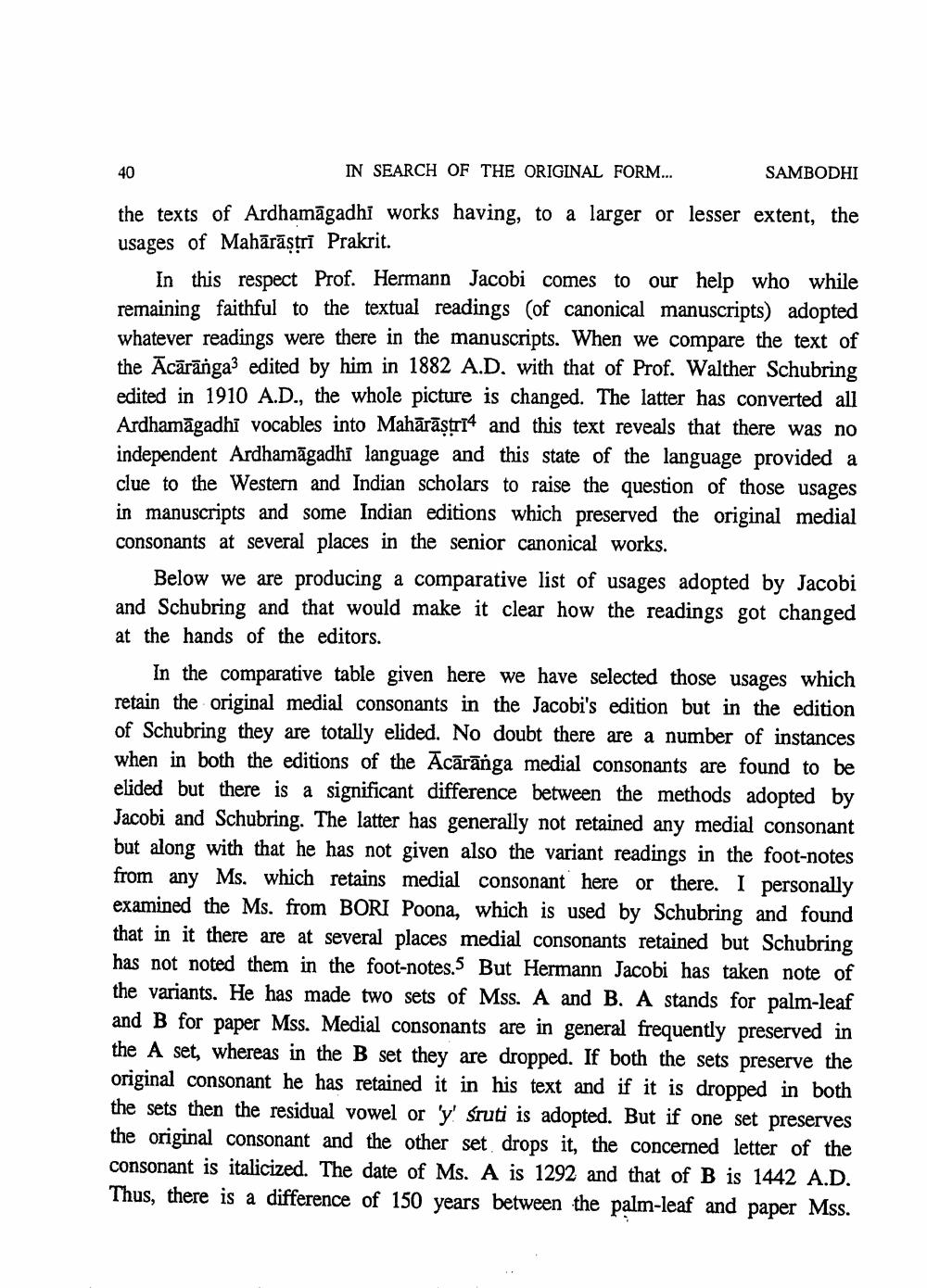________________
40
IN SEARCH OF THE ORIGINAL FORM...
SAMBODHI
the texts of Ardhamāgadhi works having, to a larger or lesser extent, the usages of Mahārāștri Prakrit.
In this respect Prof. Hermann Jacobi comes to our help who while remaining faithful to the textual readings (of canonical manuscripts) adopted whatever readings were there in the manuscripts. When we compare the text of the Acārānga3 edited by him in 1882 A.D. with that of Prof. Walther Schubring edited in 1910 A.D., the whole picture is changed. The latter has converted all Ardhamāgadhĩ vocables into Mahārāştri4 and this text reveals that there was no independent Ardhamāgadhi language and this state of the language provided a clue to the Western and Indian scholars to raise the question of those usages in manuscripts and some Indian editions which preserved the original medial consonants at several places in the senior canonical works.
Below we are producing a comparative list of usages adopted by Jacobi and Schubring and that would make it clear how the readings got changed at the hands of the editors.
In the comparative table given here we have selected those usages which retain the original medial consonants in the Jacobi's edition but in the edition of Schubring they are totally elided. No doubt there are a number of instances when in both the editions of the Acārānga medial consonants are found to be elided but there is a significant difference between the methods adopted by Jacobi and Schubring. The latter has generally not retained any medial consonant but along with that he has not given also the variant readings in the foot-notes from any Ms. which retains medial consonant here or there. I personally examined the Ms. from BORI Poona, which is used by Schubring and found that in it there are at several places medial consonants retained but Schubring has not noted them in the foot-notes. But Hermann Jacobi has taken note of the variants. He has made two sets of Mss. A and B. A stands for palm-leaf and B for paper Mss. Medial consonants are in general frequently preserved in the A set, whereas in the B set they are dropped. If both the sets preserve the original consonant he has retained it in his text and if it is dropped in both the sets then the residual vowel or 'y' sruti is adopted. But if one set preserves the original consonant and the other set drops it, the concerned letter of the consonant is italicized. The date of Ms. A is 1292 and that of Bis 1442 A.D. Thus, there is a difference of 150 years between the palm-leaf and paper Mss.




